Golf History
Through The Years
Do you know the true Golf History?
Don’t worry, no one else seems to know either!!
So, where did golf begin and how did it come be the game we now know and play today? Although the game’s origin is commonly credited to Scotland in the Kingdom of Fife during the 15th Century, its true origins continue to be a hot topic for debate.
Although many early European games involve the use of both a stick and a ball, most historians believe the influence for golf in Scotland came from a game called Kolven played in Holland, and a game called Chole played in Belgium. Since Chole was introduced to Scotland in 1421 it is commonly accepted that it is the true influence to have spawned the modern game of golf.
However, evidence unearthed in April 2005 indicates that the Chinese, during the reign of the Southern Tang Dynasty, played a game very similar to “modern-day” golf some 500 years before history makes any mention of “golf” in Scotland.
So, where did “Golf” really begin? While the Scholars and Historians continue to debate Golf’s True Origins, we offer to take you on a journey through the time-line of golf from 1353 up through the modern game we know & love, and watch & play today.
Are You a Passionate Golf Historian?
|
This four volume set available from Amazon.com chronicles six centuries of golf history.
Narrated by sports commentator Pat Summerall, the Complete History of Golf is a must have for any golf buff's library. |
You can also learn quite a bit more by visiting the History of Golf with Peter Alliss. This website will take you to great depths in delving into the history of this great game.
Make sure to visit the History of the Golf Ball to learn all about how the golf ball evolved from “a rock” knocked around a pasture into the dimpled, high tech sphere we play today.
Timeline of Golf History

1353
- The first recorded reference to chole, the probable antecedent of golf. It is a derivative of hockey played in Flanders (Belgium)
1421golf history
- A Scottish regiment aiding the French against the English at the Siege of Bauge is introduced to the game of chole. Hugh Kennedy, Robert Stewart and John Smale, three of the identified players, are credited with introducing the game in Scotland.
1457golf history
- Golf, along with football, is banned by the Scots Parliament of James II because it has interfered with military training for the wars against the English.
1470
- The ban on golf is reaffirmed by the Parliament of James III.
1491golf history
- The golf ban is affirmed again by Parliament, this time under King James IV.
1502golf history
- With the signing of the Treaty of Glasgow between England and Scotland, the ban on golf is lifted.
- James IV makes the first recorded purchase of golf equipment, a set of clubs from a bow-maker in Perth, Scotland.
1513golf history
- Queen Catherine of England, in a letter to Cardinal Wolsey, refers to the growing popularity of golf in England.
1527
- The first commoner recorded as a golfer is Sir Robert Maule, described as playing on Barry Links (near the modern-day Carnoustie).
1552golf history
- The first recorded evidence of golf at St. Andrews.
1553
- The Archbishop of St. Andrews issues a decree giving the local populace the right to play golf on the links at St. Andrews.
1567
- Mary, Queen of Scots, seen playing golf shortly after the death of her husband Lord Darnley, is the first known female golfer.
1589golf history
- Golf is banned in the Blackfriars Yard, Glasgow. This is the earliest reference to golf in the west of Scotland.
1592
- The City of Edinburgh bans golfing at Leith on Sunday "in tyme of sermonis."
1618
- Invention of the feathery ball.
- King James VI and I confirms the right of the populace to play golf on Sundays.
1621golf history
- First recorded reference to golf on the links of Dornoch (later Royal Dornoch), in the far north of Scotland.
1641
- Charles II is playing golf at Leith when he learns of the Irish rebellion, marking the beginning of the English Civil War. He finishes his round.
1642golf history
- John Dickson receives a license as ball-maker for Aberdeen, Scotland.
1659golf history
- Golf is banned from the streets of Albany, New York-the first reference to golf in America.
1682golf history
- In the first recorded international golf match, the Duke of York and John Paterstone of Scotland defeat two English noblemen in a match played on the links of Leith.
- Andrew Dickson, carrying clubs for the Duke of York, is the first recorded caddy.
1687golf history
- A book by Thomas Kincaid, "Thoughts on Golve," contains the first references on how golf clubs are made.
1721golf history
- Earliest reference to golf at Glasgow Green, the first course played in the west of Scotland.
1724golf history
- "A solemn match of golf" between Alexander Elphinstone and Captain John Porteous becomes the first match reported in a newspaper. Elphinstone fights and wins a duel on the same ground in 1729.
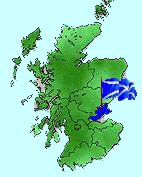
1743golf history
- Thomas Mathison's epic The Goff is the first literary effort devoted to golf.
1744golf history
- The Honourable Company of Edinburgh Golfers is formed, playing at Leith links. It is the first golf club.
- The City of Edinburgh pays for a Silver Cup to be awarded to the annual champion in an open competition played at Leith. John Rattray is the first champion.
1754golf history
- Golfers at St. Andrews purchase a Silver Cup for an open championship played on the Old Course. Bailie William Landale is the first champion.
- The first codified Rules of Golf published by the St. Andrews Golfers (later the Royal & Ancient Golf Club).
1759golf history
- Earliest reference to stroke-play, at St. Andrews. Previously, all play was match.
1764golf history
- The competition for the Silver Club at Leith is restricted to members of the Honourable Company of Edinburgh Golfers.
- The first four holes at St. Andrews are combined into two, reducing the round from twenty-two holes (11 out and in) to 18 (nine out and in). St. Andrews is the first 18-hole golf course, and sets the standard for future courses.
1766golf history
- The Blackheath Club becomes the first golf club formed outside of Scotland.
1767
- The score of 94 returned by James Durham at St. Andrews in the Silver Cup competition sets a record unbroken for 86 years.
1768golf history
- The Golf House at Leith is erected. It is the first golf clubhouse.
1773golf history
- Competition at St. Andrews is restricted to members of the Leith and St. Andrews societies.
- The Royal Burgess Golfing Society of Edinburgh is formed.
1774golf history
- Thomas McMillan offers a Silver Cup for competition at Musselburgh. He wins the first championship.
- The first part-time golf course professional (at the time also the greenkeeper) is hired, by the Edinburgh Burgess Society.
1780golf history
- The Aberdeen Golf Club (later Royal Aberdeen) is formed.
1783golf history
- A Silver Club is offered for competition at Glasgow.
1786golf history
- The South Carolina Golf Club is formed in Charleston, the first golf club outside of the United Kingdom.
- The Crail Golfing Society is formed.
1787golf history
- The Bruntsfield Club is formed.
1788golf history
- The Honourable Company of Edinburgh Golfers requires members to wear club uniform when playing on the links.
1797golf history
- The Burntisland Golf Club is formed.
- The town of St. Andrews sells the land containing the Old Course (known then as Pilmor Links), to Thomas Erskine for 805 pounds. Erskine was required to preserve the course for golf.
1806golf history
- The St. Andrews Club chooses to elect its captains rather than award captaincy to the winner of the Silver Cup. Thus begins the tradition of the Captain "playing himself into office," by hitting a single shot before the start of the annual competition.
1810golf history
- Earliest recorded reference to a women's competition at Musselburgh.
1820golf history
- The Bangalore Club is formed, the first club outside of the British Isles.
1824
- The Perth Golfing Society is formed, later Royal Perth (the first club so honored).
1826golf history
- Hickory imported from America is used to make golf shafts.
1829golf history
- The Calcutta Golf Club (later Royal Calcutta) is formed.
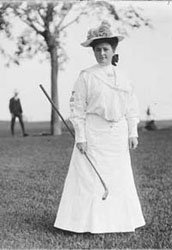
1832
- The North Berwick Club is founded, the first to include women in its activities, although they are not permitted to play in competitions.
1833golf history
- King William IV confers the distinction of "Royal" on the Perth Golfing Society; as Royal Perth it is the first Club to hold the distinction.
- The St. Andrews Golfers ban the stymie, but rescind the ban one year later.
1834golf history
- William IV confers the title "Royal and Ancient" on the Golf Club at St. Andrews.
1836
- The Honourable Company of Edinburgh Golfers abandons the deteriorating Leith Links, moving to Musselburgh.
- The longest driver ever recorded with a feathery ball, 361 yards, is achieved by Samuel Messieux at Elysian Fields.
1842golf history
- The Bombay Golfing Society (later Royal Bombay) is founded.
1844golf history
- Blackheath follows Leith in expanding its course from five to seven holes. North Berwick also had seven holes at the time, although the trend toward a standard eighteen had begun.
1848golf history
- Invention of the "guttie," the gutta-percha ball. It flies farther than the feathery and is much less expensive. It contributes greatly to the expansion of the game.
1851
- The Prestwick Golf Club is founded.
1856golf history
- The Royal Curragh Golf Club is founded at Kildare, the first golf club in Ireland. Pau Golf Club is founded, the first on the Continent.
- A rule change is enacted that, in match play, the ball must be played as it lies or the hole be conceded. It is the last recorded toughening of the rules structure.
1857golf history
- The Golfer's Manual, by "A Keen Hand" (H.B. Farnie), is published. It is the first book on golf instruction.
- The Prestwick Club institutes the first Championship Meeting, a foursomes competition at St. Andrews attended by eleven golf clubs. George Glennie and J.C. Stewart win for Blackheath.
1858golf history
- The format of the Championship Meeting is changed to individual match play and is won by Robert Chambers of Bruntsfield.
- Allan Robertson becomes the first golfer to break 80 at the Old Course, recording a 79.
1859golf history
- The first Amateur Championship is won by George Condie of Perth.
- Death of Allan Robertson, the first great professional golfer.
1860
- The Prestwick Club institutes a Professional Championship played at Prestwick-the first Championship Belt is won by Willie Park.
1861golf history
- The Professionals Championship is opened to amateurs, and the British Open is born. The first competition is won by Old Tom Morris.
1864golf history
- The North Devon Golf Club is founded at Westward Ho!
1867golf history
- The Ladies' Golf Club at St. Andrews is founded, the first golf club for women.
1869
- The Liverpool Golf Club is founded at Hoylake, later Royal Liverpool.
- Young Tom Morris, age 17, wins the first of four successive British Open championships. His streak would include an 11-stroke victory in 1869 and a 12-stroke victory in 1870 (in a 36-hole format). His 149 in the 1870 British Open over 36 holes is a stroke average that would not be equalled until the invention of the rubber-cored ball.
1870
- Young Tom Morris wins his third consecutive British Open Championship, thus winning permanent possession of the Belt.
- The Royal Adelaide Golf Club is founded, the first golf club in Australia.
1872golf history
- The British Open Championship is reinstituted when Prestwick, St. Andrews and the Honourable Company offer a new trophy, with the Open Championship to be hosted in rotation by the three clubs.
- Young Tom Morris wins his fourth consecutive British Open Championship.
1873golf history
- The Royal Montreal Golf Club is formed, the first club in Canada.
- The British Open is held for the first time at the Old Course.
1875
- The Oxford and Cambridge University Golf Clubs are founded.
1878
- The first University Match is played at Wimbledon, won by Oxford.
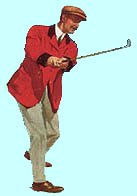
1880
- Royal Belfast is founded.
- The use of moulds is instituted to dimple the gutta-percha ball. Golfers had long noticed that the guttie worked in the air much better after it had been hit several times and scuffed up.
1883golf history
- Bob Ferguson of Musselburgh, losing the British Open in extra holes, comes one victory shy of equalling Young Tom Morris' record of four consecutive titles. Ferguson ends up later in life penniless, working out of the Musselburgh caddy-shack.
1884golf history
- The Oakhurst Golf Club is founded at White Sulphur Springs. The first hole at The Homestead survives from this course and is the oldest surviving golf hole in America.
1885
- The Royal Cape Golf Club is founded at Wynberg, South Africa, the first club in Africa.
1886golf history
- A.J. Balfour is appointed Chief Secretary (Cabinet Minister) for Ireland-his rise to political and social prominence has an incalculable effect on the popularity of golf, as he is an indefatigable player and catalyzes great interest in the game through his writing and public speaking.
1887golf history
- The Art of Golf by Sir Walter Simpson is published.
1888golf history
- The St. Andrews Golf Club is founded in Yonkers, N.Y., the oldest surviving golf club in America.
1890golf history
- John Ball, an English amateur, becomes the first non-Scotsman and first amateur to win the British Open.
- Bogey is invented by Hugh Rotherham, as the score of the hypothetical golfer playing perfect golf at every hole. Rotherham calls this a "Ground Score," but Dr. Thomas Brown, honorary Secretary of the Great Yarmouth Club, christens this hypothetical man a "Bogey Man," after a popular song of the day, and christens his score a "Bogey." With the invention of the rubber-cored ball golfers are able to reach the greens in fewer strokes, and so bogey has come to represent one over the par score for the hole.
1891golf history
- Shinnecock Hills Golf Club is founded.
1892golf history
- Gate money is charged for the first time, at a match between Douglas Rollard and Jack White at Cambridge. The practice of paying for matches through private betting, rather than gate receipts and sponsorships, survives well into the 20th Century as a "Calcutta," but increasingly gate receipts are the source of legitimate prize-purses.
- The Amateur Golf Championship of India and the East is instituted, the first international championship event.
1893golf history
- The [British] Ladies' Golf Union is founded and the first Open Championship won by Lady Margaret Scott, at St. Anne's.
1894golf history
- The Open is played on an English course for the first time and is won for the first time by an Englishman, J.H. Taylor.
- The United States Golf Association is founded as the Amateur Golf Association of the United States. Charter members are the Chicago Golf Club, The Country Club, Newport Golf Club, St. Andrews Golf Club, and Shinnecock Hills Golf Club.
- Tacoma Golf Club is founded, the first golf club on the Pacific Coast.
1895golf history
- The United States Open is instituted. Willie Anderson is the first winner.
- Chicago Golf Club opens the United States' first 18-hole golf course.
- The pool cue is banned as a putter by the USGA.
- The U.S. Women's Amateur is instituted. Mrs. Charles S. Brown is the first winner.
1896
- Harry Vardon wins his first British Open.
1897golf history
- The first NCAA championship is held. Louis Bayard Jr. is the champion.
- Golf, America's first golfing magazine, is published for the first time.
1898golf history
- Freddie Tait, betting he could reach the Royal Cinque Ports G.C. clubhouse from the clubhouse at Royal St. George's -- a three mile distance -- in forty shots or less, puts his 32nd stroke through a window at the Cinque Ports club.
- The Haskell ball is designed and patented by Coburn Haskell. It is the first rubber-cored ball.
- The term "birdie" is coined at Atlantic C.C. from "a bird of a hole."
1899
- The Western Open is first played at Glenview G.C., the first tournament in what would evolve into the PGA TOUR.
1900golf history
- Harry Vardon wins the U.S. Open, the first golfer to win both the British and U.S. Opens.
- Golf is placed on the Olympic calendar for the 2nd Games at Paris.
1901
- Walter Travis becomes the first golfer, in the U.S. Amateur, to win a major title with the Haskell ball. When Sandy Herd wins the British Open and Laurie Auchterlonie the U.S. Open the next year with the Haskell, virtually all competitors switch to the new ball.
- Sunningdale, a course built amidst a cleared forest, opens for play. It is the first course with grass grown completely from seed. Previously, golf courses were routed through meadows, which frequently created drainage problems as the meadows were typically atop clay soil.
- The first course at the Carolina Hotel (later the Pinehurst Resort & CC) in Pinehurst, N.C., is completed by Donald Ross. Ross will go on to design 600 courses in his storied career as a golf course architect.
1902golf history
- England and Scotland inaugurate an Amateur Team competition, with Scotland winning at Hoylake.
- The first grooved-faced irons are invented.
1903
- Oakmont C.C. is founded in Oakmont, Pennsylvania, designed by Henry Fownes. It is widely regarded as one of the finest examples of penal-style golf architecture.
1904golf history
- Walter J. Travis becomes the first American to win the British Amateur.

1905
- Women golfers from Great Britain and the United States play an international match, with the British winning 6 matches to 1.
- The first dimple-pattern for golf balls is patented by William Taylor in England.
- The Complete Golfer by Harry Vardon is published. It promotes and demonstrates the Vardon or overlapping grip.
1906golf history
- Goodrich introduces a golf ball with a rubber core filled with compressed air. The "Pneu-matic" proves quite lively, but also prone to explode in warm weather, often in a golfer's pocket. The ball is eventually discontinued; at this time the Haskell ball achieves a dominance of the golf ball market.
1907
- Arnaud Massey becomes the first golfer from the Continent to win the British Open.
1908golf history
- Mrs. Gordon Robertson, at Princes Ladies GC, becomes the first female professional.
- The Mystery of Golf by Arnold Haultain is published.
1909
- The USGA rules that caddies, caddymasters and greenkeepers over the age of sixteen are professional golfers. The ruling is later modified and eventually reversed in 1963.
1910golf history
- The R & A bans the center-shafted putter while the USGA keeps it legal -- marking the beginning of a 42-year period with two official versions of The Rules of Golf.
- Steel shafts are patented by Arthur F. Knight.
1911
- J.J. McDermott becomes the first native-born American to win the U.S. Open. At 17 years of age, he is also the youngest winner to date.
1912golf history
- John Ball wins his eighth British Amateur championship, a record not yet equaled.
1913
- Francis Ouimet, age 20, becomes the first amateur to win the U.S. Open, defeating favorites Harry Vardon and Ted Ray in a play-off.
- The first professional international match is played between France and the United States at La Boulie, France.
1914golf history
- Formation of The Tokyo Club at Komozawa kicks off the Japanese golf boom.
- Harry Vardon wins his sixth British Open, a record to this day (Peter Thomson and Tom Watson have since won five Opens each).
1915golf history
- The British Open is discontinued for the duration of the First World War.
1916
- The PGA of America is founded by 82 charter members and the PGA Championship is inaugurated. James Barnes is the first champion.
- The first miniature golf course opens in Pinehurst, North Carolina.
- Francis Ouimet is banned from amateur play for his involvement with a sporting goods business. The ruling creates a stir of protest and is reversed in 1918.
1917
- The PGA Championship and the U.S. Open are discontinued for the duration of the First World War.
1919
- The R & A assumes control over the British Open and the British Amateur.
- Pebble Beach Golf Links opens as the Del Monte G.L. in Pebble Beach, California.
1920
- The USGA founds its famed Green Section to conduct research on turfgrass.
- The first practice range is opened in Pinehurst, North Carolina.
- The Professional Golfer of America is first published which, today known as PGA Magazine, is the oldest continually-published golf magazine in the United States.
1921
- The R & A limits the size and weight of the ball.
1922
- Walter Hagen becomes the first native American to win the British Open. He subsequently becomes the first professional golfer to open a golf equipment company under his own name.
- The Walker Cup Matches are instituted. The grandson of Walker Cup founder George Herbert Walker is George H.W. Bush, the 41st President of the United States.
- The Prince of Wales is elected Captain of the R & A.
- The Texas Open is inaugurated, the second-oldest surviving PGA TOUR event. Pine Valley Golf Club opens.
1923
- The West and East courses at Winged Foot Golf Club open for play, designed by A.W. Tillinghast.
1924
- Joyce Wethered wins her record fifth consecutive English Ladies' Championship.
- The Olympic Club in San Francisco opens for play.
- The USGA legalizes steel shafted golf clubs. The R & A does not follow suit until 1929, widening the breach in The Rules of Golf.
1925
- The first fairway irrigation system is developed in Dallas, Texas.
- Deep-grooved irons are banned by both the USGA and the R & A.
1926
- Jesse Sweetser becomes the first native-born American to win the British Amateur. Bobby Jones wins the British Open.
- Gate money is instituted at the British Open.
- Walter Hagen defeats Bobby Jones 12 and 11 in a privately sponsored 72-hole match in Florida.
- The Los Angeles Open is inaugurated, the third-oldest surviving PGA TOUR event. The L.A. Open is also the first tournament to offer a $10,000 purse.
1927
- The inaugural Ryder Cup Matches are played between Britain and the United States.
- Creeping bentgrass is developed for putting greens by the U.S. Department of Agriculture.
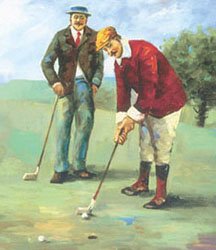
1928
- Cypress Point Club opens, designed by Alister Mackenzie.
1929
- Walter Hagen wins the British Open for the fourth time.
- Seminole Golf Club opens in Palm Beach, Fla., from a design by Donald Ross.
1930
- Bobby Jones completes the original Grand Slam, winning the U.S. and British Amateurs and the U.S. and British Opens in the same year. Since Jones is an amateur, however, the financial windfall belongs to professional Bobby Cruickshank, who bets on Jones to complete the Slam, at 120-1 odds, and pockets $60,000.
- The Minehead Club makes Captaincy elective. They had been the last club to award the Captaincy to the winner of the annual competition.
- The Duke of York (later King George VI) is elected Captain of the R & A. Shinnecock Hill Golf Club opens its modern course on Long Island, NY.
- Bob Harlow is hired as manager of the PGA's Tournament Bureau, and he first proposes the idea of expanding "The Circuit," as the TOUR is then known, from a series of winter events leading up to the season ending North & South Open in spring, into a year-round TOUR.
1931
- Billy Burke defeats George Von Elm in a 72- hole playoff at Inverness to win the 1931 U.S. Open, in the longest playoff ever played. They were tied at 292 after regulation play, and both scored 149 in the first 36-hole playoff. Burke is the first golfer to win a major championship using steel-shafted golf clubs.
- The USGA increases the minimum size of the golf ball from 1.62 inches to 1.68 inches, and decreases the maximum weight from 1.62 ounces to 1.55. The R&A does not follow suit. The lighter, larger "balloon ball" is universally despised and eventually the USGA raises the weight back to 1.62 ounces.
1932
- The first Curtis Cup Matches are held at Wentworth in England.
- The concave-faced wedge is banned.
- Gene Sarazen introduces the sand-wedge.
1933
- The Prince of Wales reaches the final of the Parliamentary Handicap Tournament.
- Augusta National Golf Club, designed by Alister Mackenzie with advice from Bobby Jones, opens for play.
- Craig Wood hits a 430-yard drive at the Old Course's fifth hole in the British Open, this is still the longest drive in a major championship.
- Hershey Chocolate Company, in sponsoring the Hershey Open, becomes the first corporate title sponsor of a professional tournament.
1934
- The first Masters is played. Horton Smith is the first champion. In this inaugural event, the present-day back and front nines were reversed.
1935
- Glynna Collett Vare wins the U.S. Women's Amateur a record sixth time.
- Pinehurst #2 is completed by Donald Ross, generally described as his masterpiece.
- Gene Sarazen double-eagles the par-5 15th hole to catch the leaders at the Masters. His "Shot Heard Round the World" propels him to victory, and due to the coverage of his feat, propels both the game of golf and Augusta National to new heights of popularity.
1936
- Henry Cotton wins his third consecutive British Open.
- Johnny Fisher becomes the last golfer to win a major championship (the U.S. Amateur) with hickory-shafted clubs.
1937
- The Bing Crosby Pro-Am is inaugurated in San Diego. A few years later it moves to the Monterey Peninsula.
1938
- The British amateurs score their first victory over the United States in the Walker Cup Matches at the Old Course.
- The Palm Beach Invitational becomes the first tournament to make a contribution to charity-$10,000.
- The 14-club rule is instituted by the USGA.
1940
- The British Open and Amateur are discontinued for the duration of the Second World War.
1942
- The U.S. Open is discontinued for the duration of the war. A world-wide shortage of rubber, a vital military supply, creates a shortage and huge price increase in golf balls. Sam Snead manages to complete an entire four-day tournament playing one ball, but the professional circuit is severely curtailed.
- The U.S. government halts the manufacture of golf equipment for the duration of the war.
1943
- The PGA Championship is cancelled for the year, and the Masters is discontinued for the duration of the war.
1944
- The PGA expands the TOUR to 22 events despite the absence of many of its star players due to military service.
1945
- Byron Nelson wins 18 tournaments in a calendar year to set an all-time PGA TOUR record-including a record 11 in a row and a record 19 consecutive rounds under 70. His total prize earnings during his 11-win streak, $30,000, is less than last place money for the PGA TOUR Championship by 1992.
- The Tam O'Shanter Open offers a then-record purse of $60,000.
1946
- The U.S. Women's Open is instituted. Petty Berg is the first winner.
1947
- Mildred "Babe" Zaharias becomes the first American to win the British Women's Open, at Gullane.
- Golf is televised for the first time, in a local St. Louis telecast of the U.S. Open. Golf World magazine is founded.
1948
- Bobby Locke becomes the first South African to win the British Open.
- Bobby Locke sets a PGA TOUR record with a 16-stroke winning margin in the Chicago Victory National Championship.
- Herbert Warren Wind's authoritative The Story of American Golf is published.
- The U.S. Junior Amateur is instituted. Ken Venturi loses to Dean Lind in the first final.
- The USGA Golf Journal is founded.
1949
- Louise Suggs wins the U.S. Women's Open by a record margin of 14 strokes.
- Marie Roke of Wollaston, MA aces a 393-yard hole-the longest ace ever recorded by a woman.
1950
- The LPGA is founded, replacing the ailing Women's Professional Golf Association.
- Ben Hogan, only weeks after returning to the PGA TOUR following a near-fatal auto accident, wins the U.S. Open at Oakland Hills.
1951
- Francis Ouimet becomes the first American Captain of the R & A.
- The USGA and the R & A, in a conference, complete a newly revised Rules of Golf. Although in1951 the R & A and the USGA continue to differ over the size of the golf ball, all other conflicts are resolved in this momentous conference. The center-shafted putter is legalized world-wide. The out-of-bounds penalty is standardized at stroke-and-distance, and the stymie is finally and forever abolished.
- Golf Digest is founded, with Bill Davis as editor.
- Al Brosch shoots 60 in the Texas Open to set an 18-hole PGA TOUR record.
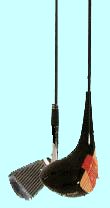
1952
- Marlene Hagge wins the Sarasota Open when she is 18 years 14 days old-an LPGA record.
- Patty Berg shoots an LPGA-record of 64 for an 18-hole round.
- The National Hole-in-One Clearing House is established by Golf Digest.
1953golf history
- Tommy Armour's How to Play Your Best Golf All the Time is published and becomes the first golf book ever to hit the best-seller lists.
- Ben Hogan wins the first three legs of the modern "Grand Slam" (The Masters, U.S. Open, and British Open), but fails to win the final leg, the PGA Championship.
- The Tam O'Shanter World Championship becomes the first tournament to be nationally televised. Lew Worsham holes a 104-yard wedge shot on the final hole for eagle and victory in one of the most dramatic finishes ever.
- The Canada Cup is instituted, the first event that brings together teams from all over the world. After 1966 the tournament is known as the World Cup.
1954
- Peter Thomson becomes the first Australian to win a major tournament with a victory in the British Open.
- Architect Robert Trent Jones, upon receiving complaints that he has made the par-3 fourth hole at Baltusrol too hard for the upcoming U.S. Open, plays the hole to see for himself and records a hole-in-one.
- The U.S. Open is nationally televised for the first time.
- The Tam O'Shanter World Championship offers the first $100,000 purse for a golf tournament.
- "All-Star Golf," a filmed series of matches, debuts on network television.
- Babe Zaharias returns to the LPGA Tour following cancer surgery and wins the U.S. Women's Open.
- The first PGA Merchandise Show is held in a parking lot in Dunedin, Florida, outside the PGA National Golf Club. Salesmen work the show out of the trunks of their cars. The Show goes on to become one of the main events on the golfing calendar-by 1994 it grows to over 30,000 attendees, four days, and has become the single-largest tenant of the Orange County Convention Center in Orlando, spilling over 220,000 square feet of exhibit space.
1955
- Mike Souchak shoots 60-68-64-65 for a PGA TOUR record 27-under-par 257 for 72 holes, at Brackenridge Park GC in the Texas Open. The record still stands.
1956
- The current yardage guides for par are adopted by the USGA.
1957
- Great Britain wins the Ryder Cup matches at Lindrick-ending a drought that dates back to 1935.
- E. Harvie Ward loses his amateur status for accepting expenses from sponsors for golf tournaments. The ruling is reversed in 1958.
- Ben Hogan's Five Lessons is published.
1958
- Arnold Palmer is allowed a controversial free drop to save par in the final round of the Masters, and he goes on to defeat Ken Venturi.
1959
- Bill Wright, in winning the U.S. Amateur Public Links, becomes the first African-American to win a national championship.
- Golf Magazine is founded, with Charles Price as the first editor.
1960
- Arnold Palmer comes back from six shots down in the final round to win the US Open.
- With his victory, he completes the first two legs of the modern Grand Slam after winning the Masters in April, the first to do so since Ben Hogan in 1953. He finishes second to Kel Nagle in the British Open to end his bid. Palmer's entry in the British Open is credited with reviving world-wide interest in the championship. Palmer went on to win the British Open in both 1961 and 1962.
- Lifting, cleaning, and repairing ball marks is allowed on the putting green for the first time.
1961
- Gary Player becomes the first foreign player to win the Masters.
- Caucasians-only clause stricken from the PGA constitution, and at the Greater Greensboro Open Charlie Sifford becomes the first black golfer to play in a PGA co-sponsored tournament in the South.
1962
- Dr. Joseph Boydstone records 11 aces in one calendar year. Three were recorded in one round, at Bakersfield C.C., Calif.
- Jack Nicklaus wins his first professional tournament, the U.S. Open, the last player to win the U.S. Open as his first pro victory.
- Painted lines are first utilized to mark water hazards at the U.S. Open.
1963
- Arnold Palmer becomes the first professional to earn over $100,000 in official prize money in one calendar year.
- Mickey Wright wins a record 13 events on the LPGA Tour in one year.
- The casting method for irons is first employed.
- In November 1963, golf heavies and showbiz elite joined together at the Canyon Club to pay tribute to the icon in a five-day swingfest in the desert. It was the one-time-only, PGA-sanctioned, Frank Sinatra Invitational, followed by a black-tie gala in the ballroom of the Palm Springs Riviera Hotel.
1964
- PGA National opens, in Palm Beach, Fla.
- Mickey Wright sets the LPGA 18-hole record with a 62 at Hogan Park GC in the Tall City Open.
- Norman Manley, an amateur from Long Beach, Calif., scores holes-in-one on two successive par-4s at Del Valley CC, Calif. It is the first and only time this feat has been accomplished.
1965
- Sam Snead wins the Greater Greensboro Open, his 81st TOUR victory, a record. His victory is the eighth in the Greensboro event, also a record. Finally, he wins at the age of 52, also a PGA TOUR record.
- Jack Nicklaus sets a tournament record of 271 in winning the Masters.
- Mrs. William Jenkins Sr. of Baltimore, Md., double-eagles the par-five 12th hole at Longview GC, the longest ever recorded by a woman.
- PGA TOUR Qualifying School is inaugurated at PGA National, with 17 golfers of the 49 applicants winning their playing cards.
1966
- Arnold Palmer blows a six-shot lead in the final round of the US Open, losing to a surging Billy Casper at Olympic.
1967
- Charlie Sifford, by winning the Greater Hartford Open, becomes the first African-American to win a PGA TOUR event.
- Catherine Lacoste becomes the first amateur to win the U.S. Women's Open.
- The Canada Cup changes its name to the World Cup.
1968
- Arnold Palmer passes the $1 million mark in career PGA earnings.
- The PGA of America and the PGA TOUR officially split, with the professionals forming a breakaway group known as the Association of Professional Golfers. The breach is eventually healed, and a Tournament Players Division of the PGA is formed. Joe Dey is elected the next year as the first PGA TOUR commissioner.
- Tommy Moore, age 6 years 1 month, 1 week, becomes the youngest player to score a hole-in-one. Moore also becomes, in 1975, the youngest player ever to score a double-eagle.
- Roberto DeVicenzo ties Bob Goalby after regulation play in the Masters, but signs an incorrect scorecard and loses the event.
1969
- Ollie Bowers of Gaffney, S.C. completes a record 542 rounds (9,756 holes) in one calendar year.
- Jack Nicklaus concedes Tony Jacklin's final putt and England ties the U.S. in the Ryder Cup matches, after five consecutive defeats. The gesture is often hailed as "the greatest act of sportsmanship in history."
- The trendsetting Harbour Town Golf Links opens on Hilton Head Island, S.C., designed by Pete Dye with assistance from Jack Nicklaus.
1970
- Bill Burke, with a 57 at Normandie C.C., sets the all-time official record for low 18-hole score.
- Thad Doker of Durham, N.C., records a record two-under par 70 in the World One Club Championship at Lochmere CC.
1971
- Laura Baugh wins the US Amateur at 16 years 2 months of age.
- Alan Shepard hits a six-iron at "Fra Mauro Country Club" on the moon.
1972
- Carolyn Gidone wins the US Senior Women's Amateur for a record fifth consecutive time.
- Dick Kimbrough completes 364 holes in 24 hours at the 6,068 North Platte CC in Nebraska.
- Tom Doty records 10-under-par in four holes at Brookwood CC, Illinois. His streak includes a double-eagle, two holes-in-one, and an eagle.
- Spalding introduces the first two-piece ball, the Top-Flite.
- Jack Nicklaus completes the first two legs of the modern Grand Slam winning the Masters and the US Open (at Pebble Beach), but like Arnold Palmer in 1960, falters in the British Open by finishing second (to Lee Trevino).
1973
- Ben Crenshaw wins the NCAA title for a record 3rd consecutive time. Later in the year, after earning his PGA TOUR card, he wins the first event he plays as a PGA TOUR member, the San Antonio Open.
- Johnny Miller fires a record 63 in the final round to win the US Open at Oakmont.
- The graphite shaft is invented.
- The classic golf book Golf in the Kingdom, by Michael Murphy, is published.
- Jack Nicklaus wins the PGA Championship and breaks Bobby Jones' record for most major victories with his 14th.
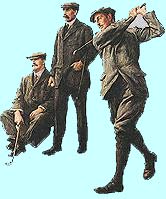
1974
- Deane Beman is elected as the second PGA TOUR commissioner.
- Roberto DeVicenzo scores six birdies, an eagle, and three more birdies for a record 11-under par for ten holes, at Valla Allende GC, Argentina.
- The World Golf Hall of Fame is opened in Pinehurst, North Carolina.
- Mike Austin hits a 515-yard drive at the 1974 National Seniors Open in Las Vegas, Nev., the longest drive ever recorded in competition.
- Jack Nicklaus' Golf My Way is published.
- Tom Weiskopf strikes a 420-yard drive in the greenside bunker on the 10th hole at Augusta National-the longest drive in Masters history.
- Muirfield Village Golf Club opens from a Desmond Muirhead/Jack Nicklaus design.
- The Tournament Players Championship is inaugurated.
1975
- Lee Elder becomes the first black golfer to play in the Masters.
- Lee Trevino, Jerry Heard and Bobby Nichols are struck by lightning during the 1975 Western Open. The incident prompts new safety standards in weather preparedness at PGA events, but four spectators are killed when struck by lightning during the 1991 U.S. Open at Hazeltine National.
1976
- Judy Rankin becomes the first LPGA professional to earn more than $100,000 in a season.
- Richard Stanwood sets the record for fewest putts in one round -- 15 -- at Riverside GC in Pocatello, ID.
- The USGA institutes the Overall Distance Standard -- golf balls that fly more than 280 yards during a standard test are banned.
1977
- Al Geiberger shoots 59 at Colonial CC in the second round of the Memphis Classic, to set a new PGA TOUR 18-hole record.
- Bing Crosby dies after completing a round of golf in Spain. His Bing Crosby National Pro-Am continues for several years, but after relations sour between the PGA TOUR and the Crosby family, AT&T takes over sponsorship of the event.
- The "sudden-death" playoff is used for the first time in a major championship, when Lanny Wadkins defeats Gene Littler for the PGA Championship played at Pebble Beach G.L.
- In what has been described as the most exciting tournament in history, Tom Watson defeats Jack Nicklaus by one stroke in the British Open, at Turnberry. They were tied after the second and third rounds, and were paired with each other during the final 36 holes.
1978
- The Legends of Golf is inaugurated at Onion Creek C.C. in Austin, Texas. Its popularity leads to the formation of the Senior TOUR two years later.
1979
- The Ryder Cup is reformatted to add European continent players to the British-Scottish-Irish side, making the event far more competitive.
- Taylor Made introduces the first metal woods.
1980
- Tom Watson is the first golfer to earn $500,000 in prize money in a single season.
- The PGA Senior TOUR is born, with four official events.
- The U.S. Senior Open is instituted. Roberto De Vicenzo is the first winner.
- Jack Nicklaus sets a record of 272 in the U.S. Open at Baltusrol. His mark is equalled in the 1993 U.S. Open by Lee Janzen, also at Baltusrol.
- The USGA introduces the Symmetry Standard, banning balls such as the Polaris which correct themselves in flight.
- Gary Wright completes 18 holes in a record 28 minutes 9 seconds at Twantin Noosa GC, Australia (6,039 yards).
1981
- The Tournament Players Club at Sawgrass opens, with its controversial island green 17th hole, and immediately becomes the permanent host of the Tournament Players Championship. The TPC at Sawgrass becomes the prototype for a dozen "stadium" TPC courses around the United States, built specifically to host PGA TOUR co-sponsored events and affording better viewing for spectators.
- The USGA institutes the Mid-Amateur.
- Kathy Whitworth becomes the first woman to earn $1 million in career prize money.
1982
- Kevin Murray double-eagles the 647-yard second hole at the Guam Navy GC, the longest double-eagle ever recorded.
1983
- The PGA TOUR introduces the all-exempt Tour, with the top 125 players exempt from qualifying tournaments.
1984
- Desert Highlands opens in Phoenix from a design by Jack Nicklaus utilizing only 80 irrigated acres for 18 holes, instead of the typical 100-150 for a major course. The success of Nicklaus' concept of "target golf" ushers in the era of environmentally-sensitive desert design.
1985
- Nancy Lopez sets the LPGA 72-hole record with 268 in the Henredon Classic.
- The United States loses the Ryder Cup matches for the first time since 1957, to the expanded European team.
- The USGA introduces the Slope System to allow golfers to adjust their handicaps to allow for the relative difficulty of a golf course compared to players of their own ability.
1986
- Bob Tway sinks a miracle bunker shot to beat a stunned Greg Norman in the PGA Championship. Norman had held the lead on Sunday morning in each of the four major championships of 1986, but was able to win only in the British Open. Only Bobby Jones had previously held the Sunday morning lead in each Grand Slam event. Tway's stroke inaugurated a celebrated series of miracle shots holed by various golfers to defeat Norman.
- The Pete Dye-designed PGA West opens amid great controversy concerning the difficulty of the course.
- The Panasonic Las Vegas Invitational offers the first $1 million purse.
- The PGA TOUR Team Charity Competition debuts. By 1987, TOUR-related contributions to charity exceed $100,000,000, and by 1992 they reach a total of $200,000,000.
1987
- The Links at Spanish Bay opens, the first true links course in the Western United States. It is a co-design by Robert Trent Jones, Jr., Tom Watson, and former USGA President Frank "Sandy" Tatum.
- Judy Bell becomes the first woman elected to the USGA Executive Committee.
- The Nabisco Championships (later the TOUR Championship) debuts as a season-ending event for the top 30 money winners. The first winner is Tom Watson, breaking a three year victory drought.
- Walter Dietz, a blind golfer, aces the 155-yard seventh hole at Manakiki G.C., California.
1988
- Links Magazine is founded (originally Southern Links), with Mark Brown as editor-in-chief.
- Lori Garbacz orders a pizza between holes at the U.S. Women's Open to protest slow play. Square-grooved clubs such as the PING Eye2 irons are banned by the USGA, which claims that tests show the clubs give an unfair competitive advantage to PING customers. The PGA TOUR also bans the clubs in 1989. Karsten Manufacturing, maker of the clubs, fights a costly two-year battle with both the USGA and the PGA TOUR to have the ban rescinded after winning a temporary injunction. Eventually both organizations drop the ban, while Karsten acknowledges the right of the organizations to regulate equipment and pledges to make modifications to future designs.
- Curtis Strange wins the season-ending Nabisco Championships at Pebble Beach, and his $360,000 paycheck lifts his official 1988 TOUR earnings to $1,147,644, and thus he becomes the first player to win over $1,000,000 in a single season.
1989
- Four golfers, Doug Weaver, Mark Wiebe, Jerry Pate and Nick Price, hit aces on the par-three sixth hole on the same day in the U.S. Open at Oak Hill.
- Nick Faldo sinks a 100-foot birdie putt on the second hole at Augusta National in the Masters, the longest putt holed to date in a major tournament. Faldo goes on to win the Masters.
1990
- Hall Thompson of Shoal Creek GC, on the eve of the PGA Championship at Shoal Creek, defends his club's policy of not admitting black members. Amidst a public outcry, Shoal Creek 1990 is forced to change its policy and the PGA TOUR and the USGA insist that in future all clubs submit to a standard set of guidelines on membership policies. Cypress Point Club and Aronimink, among others, decide they are unable to comply and withdraw from the professional tournament arena.
- Bill Blue resigns after a short reign as LPGA Commissioner. Charles Mecham is selected as his successor.
- Construction begins on Shadow Creek Golf Club, the most expensive golf course ever built, with cost estimates ranging from $35 to $60 million as Tom Fazio creates an oasis in the Las Vegas Desert . The club in 1994 vaults into eighth place on the Golf Digest top-100 course rankings, sparking controversy.
- The R & A, after 38 years, adopts the 1.68 inch diameter ball, and for the first time since 1910
- The Rules of Golf are standardized throughout the world.
- The initial Solheim Cup is played at Lake Nona G.C., Orlando, commencing a biennial USA vs. Europe competition for women, a recognition of the growing strength of women's golf on both sides of the Atlantic.
- The Ben Hogan Tour is launched as a minor league for the PGA TOUR, following the increased success of mini-tours such as the U.S. Golf Tour in 1989.
1991
- The Ocean Course at Kiawah Island, S.C., the first course to be awarded the Ryder Cup Matches before the course has been completed, is the scene of the United States' first victory in the event since 1983. The competition comes down to a twisting seven-footer on the 18th hole missed by Bernhard Langer in the final match (against Hale Irwin).
- John Daly wins the PGA Championship at Crooked Stick when, as ninth alternate, a slot in the tournament opens up for him on the night before the Championship began. The golfer who withdrew and gave Daly his place, Nick Price, wins the PGA Championship in 1992 at Bellerive.
- Phil Mickelson, an amateur, wins the PGA TOUR's Northern Telecom Open.
- Oversized metal woods are introduced, with Callaway Golf's Big Bertha quickly establishing itself as the dominant brand, the Big Bertha driver becomes one of the biggest-selling clubs of all time.
- Harvey Penick's Little Red Book becomes the all-time best selling golf book.
1992
- Simon Clough and Boris Janic complete 18-hole rounds in five countries in one day, walking each course. They played rounds in France, Luxembourg, Belgium, Holland, and Germany, and completed their journey in 16 hours, 35 minutes.
- Brittany Andres, age 6 years 19 days, scores an ace at the 85-yard second hole at the Jimmy Clay G.C. in Austin, Texas.
1993
- An ownership group led by Joe Gibbs and Arnold Palmer announce plans for The Golf Channel, a 24-hour, 365-day cable service. The channel will launch in 1995.
1996 & 1997
Marked the arrival of Tiger Woods on the Golf Scene and ushered in a new era of golf's popularity and rise in prize money.
Here are Tiger's accomplishments over those two years.
1996
- Sports Illustrated Sportsman of the Year
- PGA Tour Rookie of the Year
- Fred Haskins College Player of the Year
- Jack Nicklaus College Player of the Year
- Pac-10 Player of the Year
- First Team All-American
- Al Master Award co-winner (presented to the outstanding athlete at Stanford for attaining the highest standards of athletic performance, leadership and academic achievement)
- Finished tied for 82nd in U.S. Open with scores of 76-69-77-72--294 and had lead through 13 holes of first round at Oakland Hills
- Tied British Open 72-hole record for an amateur with total of 281 (75-66-70-70) at Royal Lytham & St. Annes, England, matching Iain Pyman at Royal St. George's in 1993. His second round five-under 66 was the lowest by an amateur since Frank Stranahan registered the same score at Royal Troon in 1950
- Became the first player to win twice in his first year on the PGA TOUR since Robert Gamez won the 1990 Northern Telecom Tucson Open and Nestle Invitational. Became the first player to record five consecutive top-five finishes on the PGA TOUR since Curtis Strange in 1982
- Advanced to No. 33 on the world ranking, the fastest rise into the top 50 in history
- Won - Disney/Oldsmobile Classic
- Won - Las Vegas Invitational
- Won - U.S. Amateur Championship, Pumpkin Ridge Golf Club, Cornelius, Oregon (only golfer ever to win three consecutive titles, record 18 consecutive match-play victories).
- Won - NCAA Championship, The Honors Course, Chattanooga, Tenn., with scores of 69-67-69-80-285
- Won - John A. Burns Invitational
- Won - Cleveland Golf Championship
- Won - Tri-Match (Stanford, Arizona, Arizona State)
- Won - Cougar Classic
- Won - Pac-10 Championship (shot course-record 61)
- Won - NCAA West Regional
1997
- The Associated Press Male Athlete of the Year
- ESPY Male Athlete of the Year (Tied with Ken Griffey, Jr.)
- Player of the Year as selected by PGA TOUR, PGA of America and Golf Writers Association of America
- Leading money winner on PGA TOUR with $2,066,833 (most ever won in a single year)
- Won - Masters Tournament (first professional major championship) Set Masters record for youngest champion (21 years, three months, 14 days) and became the first major champion of African or Asian heritage Set Masters 72-hole record with a total of 270 (70-66-65-69) and set Masters record with 12-stroke victory margin Other Masters records set or tied: most shots under par, second nine (16), low middle 36 holes (131), low first 54 holes (201, tied Raymond Floyd, 1976), low last 54 holes (200), lowest score par-five holes in one round (six under par, tied Steve Jones, 1990), largest 54-hole lead (nine strokes), youngest 36-hole and 54-hole leader, most threes, one tournament (26)
- Won - Mercedes Championships
- Won - Asian Honda Classic (Thailand)
- Won - GTE Byron Nelson Classic
- Won - Motorola Western Open
Tiger went on to dominate Professional Golf for the next 12 years, until his public stumble and nagging injuries brought him back to a surging pack of young talented golfers reinstating balance and parity through the ranks of both The PGA Tour and The World Golf Scene.
Join GolfNow's GolfPass Program
For Great Savings on ALL your Golf
Return to The Top of This Golf History
Go Visit The Golf Balls History Page
?? Your Own Website ??
Is there a topic or a hobby for which you have a strong passion?
Have you ever considered turning that passion into a passive income stream?
Have you ever considered creating a web site like this one?
I researched long and hard for the best resources available on the web to assist me in making The-Golf-Experience.com a reality and I found none better than Solo Build It with whom to partner.
Above and beyond the comprehensive program they provide to assist you on your journey is the incredible level of customer service you'll get along the way. The world would be a better place if every company out there modeled the quality and level of their customer service after what Solo Build It seems to provide with such ease.
Watch the video below to see if your interest in creating your own web site gets a spark.
You ready?
Now click the "Solo Build It!" link below to begin your own journey.
Good luck and have some fun.
© Copyright The-Golf-Experience.com
"When Health is absent, wisdom cannot reveal itself, art cannot become manifest, strength cannot be exerted, wealth is useless, and reason is powerless."
Herophilos 335-280 B.C.
All athletes require the performance components of: strength, power, endurance, flexibility, coordination, balance, good posture, and mental conditioning to perform at their best.
Stay Healthy - Play your Best
~ ~ ~
Visit our Fitness Page to learn more!
Start investing with Acorns today and they'll add $5 to to your account to help you get started - You won't retire on their contribution ... but $5 is still $5
Visit our page on Golf Balls to learn ALL you need to know to determine which ball is best suited to your unique swing speed and style of play.
Then visit Lost Golf Balls below to buy used golf balls in the quality suited to your game and the quantity required to keep your bag full.
Find Inexpensive Gas with Gas Buddy
If you really want to save at the pump though - Get yourself a Pay With Gas Buddy Card.
Join for free to save $.05 per gallon or get a Plus or Premuim Membership to save $.20 per gallon.
Points are awarded for each score on every hole. You can use any modification for points awarded (or subtracted) on every hole, but the R&A and the USGA award points as follows:
If you appreciate exceptional customer service and personal attention given to filling your golf needs The-Golf-Experience.com highly recommends shopping with
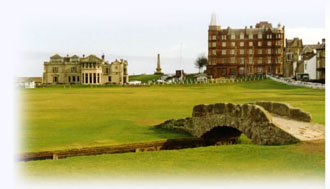
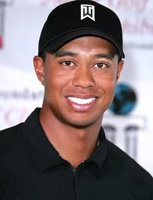






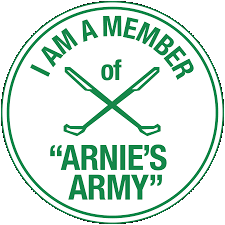




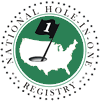
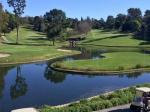













New! Comments
Join the conversation by sharing your comments and opinions about the content on this topic in the box below.